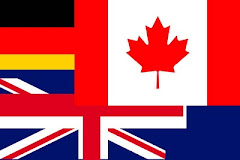Yesterday, we had two speakers: Mike Quakenbush and Steve Fulton. Both gave two fantastic, informative presentations. In each, I learned something new or got an idea of something I could do. I am sharing two things I learned from each presentation.
Social Media - making connections for genealogy - Mike [I didn't write down exact title. Mike pitched in for the first time slot as our original speaker on a different topic wasn't able to be there.]
1. Pages can be promoted on Facebook. You pay a fee but can target a particular demographic if you wish. Groups can not be promoted but you can invite others to join.
2. Twitter can be a way of sharing information and sometimes making requests. Mike gave several examples of "gatherings" related to genealogy: #Acom, #GenChat and #Ancestryhour. [I am not on Twitter. I don't have a smart phone but Mike showed how having a folder on the taskbar of Chrome you can easily access different social platforms].
Getting Started with Digital Publishing From Book to Blog - Mike
3. You can password protect an individual blog post in WordPress but Google can still find them. You can add a request button to your menu where you can have a form where the person explains why they would like to see the page.
4. Having share buttons at the end of each post makes it easy to share your posts. [I have to figure out which plugin I would use. To share with pages on Facebook, it has to been one where I am an admin.]
Cemeteries that Sing - Steve
As a graveyard rabbit and also because I am giving a talk on Grey County cemeteries in November, I was interested in hearing this presentation.
5. When dowsing in a cemetery, Steve always does the width first then the length. This will help in finding where the monument is likely situated. In a Christian cemetery this should be on the west end of the plot. Steve demonstrated the technique using wire clothes hangers cut to make the tool.
6. With difficult to read monuments, take digital photos. Then with the windows paint program or equivalent use the red pencil tool and trace the lettering to help with making out the words.
Technology Overload: Let's Get Back to the Basics and Advance our Genealogy - Steve
7. Plan what will happen after your death with your research. This includes a "will" for your online existence. Make sure someone knows how to access it.
8. You can overlay the 1880 Ontario County maps over Google maps.
9. I would attend future workshops by both of these speakers as I enjoyed their presentation style as well as the information they provided.
© 2015 Janet Iles





